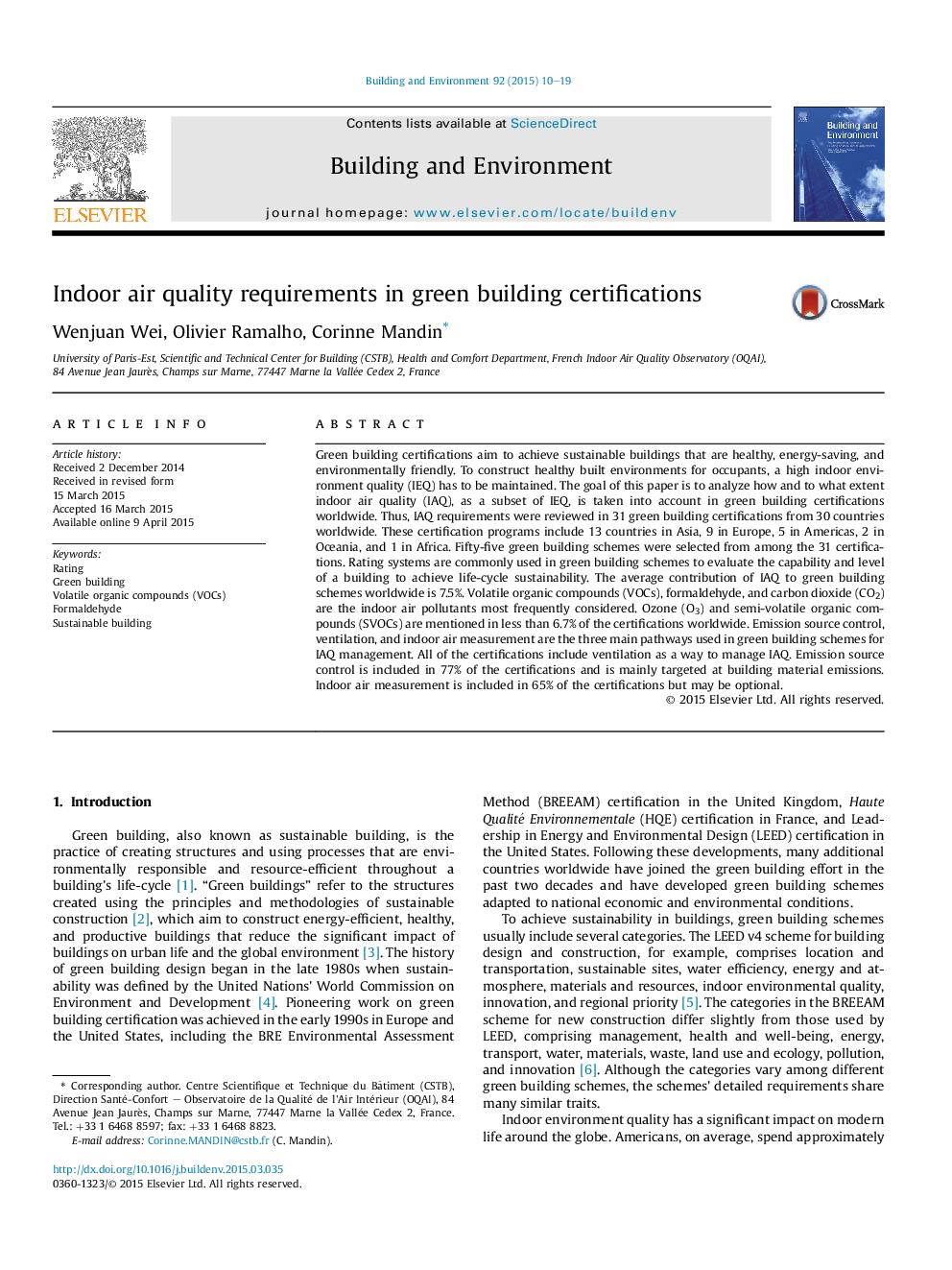| Article ID | Journal | Published Year | Pages | File Type |
|---|---|---|---|---|
| 6699603 | Building and Environment | 2015 | 10 Pages |
Abstract
Green building certifications aim to achieve sustainable buildings that are healthy, energy-saving, and environmentally friendly. To construct healthy built environments for occupants, a high indoor environment quality (IEQ) has to be maintained. The goal of this paper is to analyze how and to what extent indoor air quality (IAQ), as a subset of IEQ, is taken into account in green building certifications worldwide. Thus, IAQ requirements were reviewed in 31 green building certifications from 30 countries worldwide. These certification programs include 13 countries in Asia, 9 in Europe, 5 in Americas, 2 in Oceania, and 1 in Africa. Fifty-five green building schemes were selected from among the 31 certifications. Rating systems are commonly used in green building schemes to evaluate the capability and level of a building to achieve life-cycle sustainability. The average contribution of IAQ to green building schemes worldwide is 7.5%. Volatile organic compounds (VOCs), formaldehyde, and carbon dioxide (CO2) are the indoor air pollutants most frequently considered. Ozone (O3) and semi-volatile organic compounds (SVOCs) are mentioned in less than 6.7% of the certifications worldwide. Emission source control, ventilation, and indoor air measurement are the three main pathways used in green building schemes for IAQ management. All of the certifications include ventilation as a way to manage IAQ. Emission source control is included in 77% of the certifications and is mainly targeted at building material emissions. Indoor air measurement is included in 65% of the certifications but may be optional.
Related Topics
Physical Sciences and Engineering
Energy
Renewable Energy, Sustainability and the Environment
Authors
Wenjuan Wei, Olivier Ramalho, Corinne Mandin,
